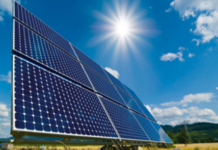
All residential and commercial needs require power supply mostly in the form of alternating current (AC). Since AC can’t be directly stored, it is converted into direct current (DC), which is then stored in ultracapacitors and batteries. Whenever AC is required to run the appliances, a particular device is required to perform the task of current conversion. An inverter is a device used to convert DC to AC at home. Such a device is either entirely electronic or a combination of mechanical components like a circuit and rotary equipment. The design and output come under different inverter price variations.
An inverter is used as an emergency backup when there is a power outage. It runs all/some electrical appliances of a home whenever the main supply goes off.
It may look like an idiot box with a few switches on the outside, but it has a tiny dynamic universe of its own, inside.
A modern inverter must be able to handle all the power fluctuations that can sometimes go as high as 35%. Through all this, it must also regulate the output with minimal power loss. This is no easy task as it requires complex setups. The designs and specifications may vary according to the inverter price.
In addition to all the functionalities, some inverters also facilitate battery charging and have the capability to feed excess power supply back to the source.
Its load, output, and source primarily classify them.
Classification according to load type:
- Single-phase inverter
- Three-phase inverters
Classification according to the source:
- Current source inverter
- Voltage source inverter
Classification according to the output:
- Square wave
- Sine wave
- Modified sine wave
Applications of An Inverter:
- Inverters can also be used as uninterrupted power supplies (UPS)
- Sometimes used as standalone inverters
- An integral part of solar power systems
- Can be used for pumps, extruders, home appliances, fans, and similar other equipment
- Power inverter is used in transmission lines
- Solar inverter converts DC power supply to AC
From car adaptors to large grid systems, different applications vary according to the variations in inverter price and its specifications.
Inverter Automation
The device consists of various circuits for automatically sensing and tackling situations that occur whenever its on standby or running. The automation detects overload, overcharge, and overheating of the devices connected to it. Accordingly, the automation in an inverter will charge switch battery to an off mode or vice-versa. All the conditions will have specific alarm sounds or light signals that indicate their different modes. Usually, these features come at a higher inverter price. Advanced devices also have LCD screens to show numerous situations.
Since the technology is advancing, various companies are manufacturing compact, practical models at a lower inverter price for the best usage.
Inverter: Brain of a Solar System
A solar power system is made up of photovoltaic (PV) cells, an inverter, and a rack for holding the PV cells. Inverter works primarily as the brain of the solar system. It converts variable direct current (DC) to alternating current (AC), which helps run various equipment. At home, it generally runs TV, refrigerator, AC, lights, fan, and similar electronic devices connected to it.
Get Best Inverter Price After Knowing Your Needs
A reliable inverter must be able to handle load variations with minimal energy loss. It must be able to protect itself from power overloads or underruns. Although automatic inverter prices are low, they have all the advanced functionalities. Luminous India offers one of the best ranges of automatic inverter prices that have an intuitive design and are easy to use. These are intelligent devices that have sleek displays, hassle-free maintenance, MCB protection with power back-up time display. You can get the one with the best inverter price that fits your needs.


















